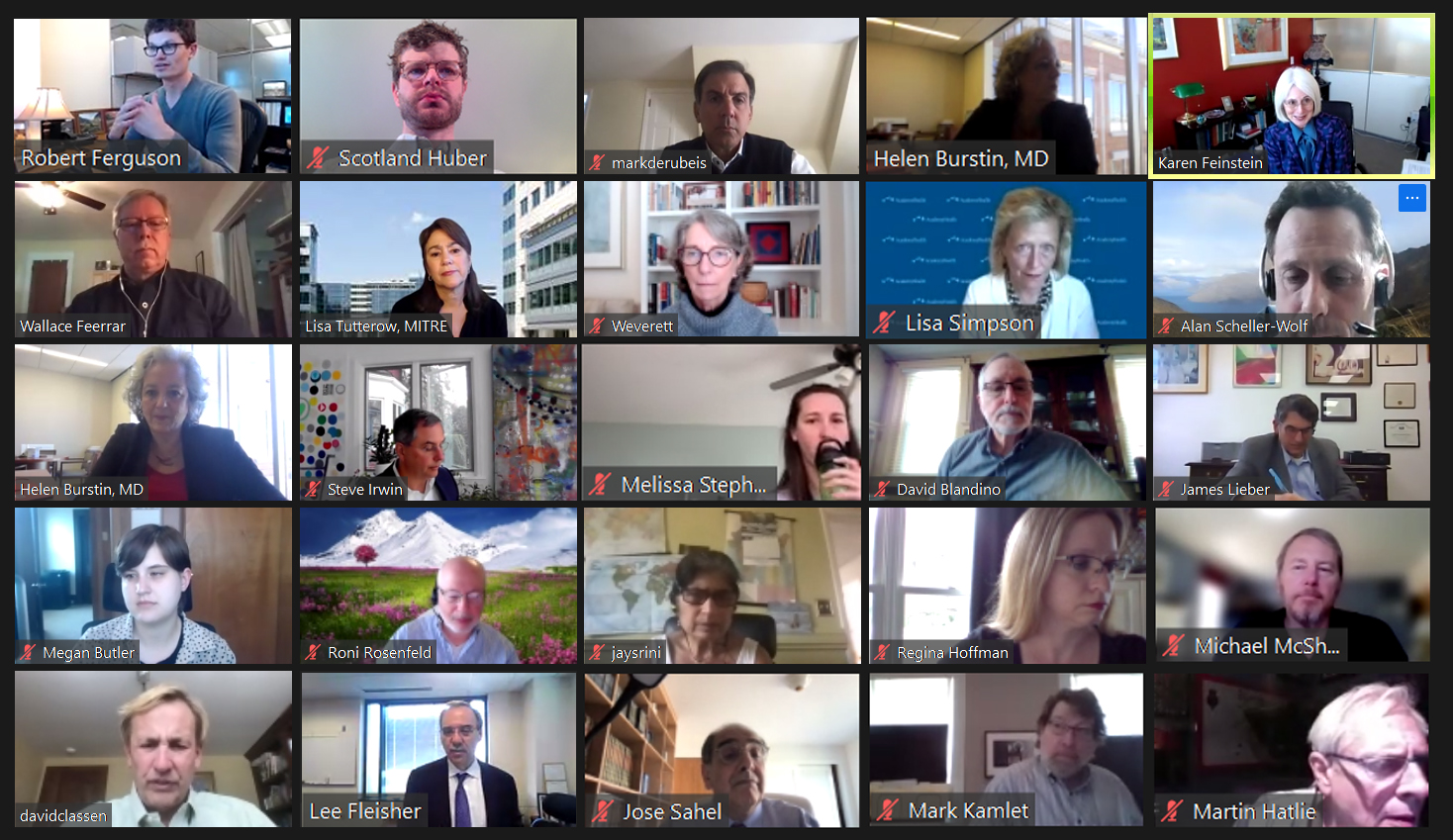Project & Program Updates
National Experts Bring Insights to Patient Safety Full Court Press Team
On March 30, the Patient Safety Full Court Press Team heard from several national experts on the opportunity to apply the aviation industry's safety model to health care, using electronic health records, data collection, and cutting-edge technology to support the proposed National Patient and Provider Safety Authority (NPSA).
From MITRE, Senior Principal Wally Feerrar spoke on how the Aviation Safety Information Analysis and Sharing (ASIAS) Program built trust and a culture of sharing safety data in the aviation industry. Wally listed the ingredients of success, including federal and industry partnerships, voluntary participation, transparency, and using de-identified data to support this culture and successfully prevent accidents.
MITRE's Deputy FFRDC Director Lisa Tutterow then shared results from a research project with several children's hospitals, which showed that the aviation industry model has great potential to reduce adverse events in health care, save lives, and avoid injuries, as well as save health care costs and reduce waste and inefficiency. Lisa emphasized that having a neutral, trusted third party in these projects to manage data and sensitive information was crucial for success.
Lisa Simpson, CEO of AcademyHealth introduced Lee Fleisher, MD, Chief Medical Officer and Director of Center for Clinical Standards and Quality, Centers for Medicare & Medicaid Services (CMS). Lee spoke on current and future aspirations to collect reliable data for patient safety indicators at CMS. Lee noted the path to the future will include harnessing and expanding high quality clinical data and using technology to leverage and retrieve the data already collected through electronic health records automatically, to reduce burden on clinicians.
José-Alain Sahel, MD, Distinguished Professor and Chairman of the Department of Ophthalmology at the University of Pittsburgh School of Medicine then spoke on "digital twin" technology and how it can be used to inform diagnoses and prescription and treatment decision making for better, safer care. The patient-centered "digital twin" technology creates a model of an individual patient that can simulate diagnostics and outcomes of various therapies, to provide individualized treatment and safety monitoring. This can inform decisions of both the clinician and the patient and contribute to a data pool that benefits each subsequent patient who would use the technology.
JHF Chief Policy Officer Robert Ferguson then introduced Regina Hoffman, MBA, RN, Executive Director of the Patient Safety Authority, who spoke about the role of patient safety authorities and patient safety organizations, and the role of the patient safety databases network. Regina echoed earlier comments about the importance of independent patient safety organizations in their capacity to develop relationships. She said that a NPSA that supports automated data collection and monitoring would resolve current issues with relying on human reporting of events.
Overall, the session emphasized the great potential for an NPSA to fill a national gap in patient safety monitoring and reporting, and that existing and upcoming technology innovations can support this proposed infrastructure.
To build on the meeting's discussion, JHF President and CEO Karen Feinstein would like to collect responses on two questions:
What are the best, reliable, respected patient safety indicators?
What other data sources, in addition to EHRs, should we be mining for patient safety indicators?
Responses can be sent to Robert Ferguson at ferguson@jhf.org.
Related Posts
By accepting you will be accessing a service provided by a third-party external to https://www.jhf.org/
